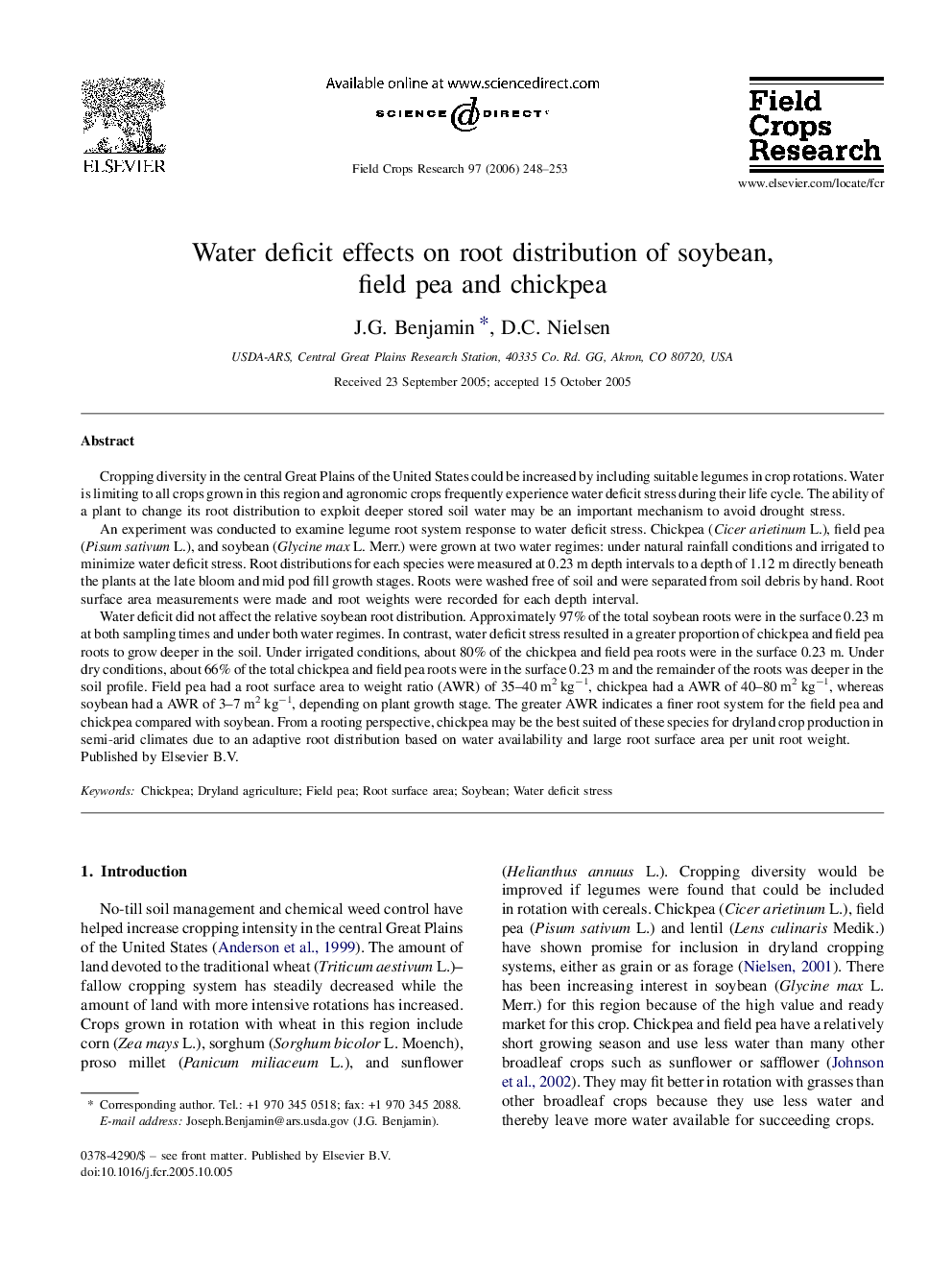| کد مقاله | کد نشریه | سال انتشار | مقاله انگلیسی | نسخه تمام متن |
|---|---|---|---|---|
| 4511718 | 1624752 | 2006 | 6 صفحه PDF | دانلود رایگان |

Cropping diversity in the central Great Plains of the United States could be increased by including suitable legumes in crop rotations. Water is limiting to all crops grown in this region and agronomic crops frequently experience water deficit stress during their life cycle. The ability of a plant to change its root distribution to exploit deeper stored soil water may be an important mechanism to avoid drought stress.An experiment was conducted to examine legume root system response to water deficit stress. Chickpea (Cicer arietinum L.), field pea (Pisum sativum L.), and soybean (Glycine max L. Merr.) were grown at two water regimes: under natural rainfall conditions and irrigated to minimize water deficit stress. Root distributions for each species were measured at 0.23 m depth intervals to a depth of 1.12 m directly beneath the plants at the late bloom and mid pod fill growth stages. Roots were washed free of soil and were separated from soil debris by hand. Root surface area measurements were made and root weights were recorded for each depth interval.Water deficit did not affect the relative soybean root distribution. Approximately 97% of the total soybean roots were in the surface 0.23 m at both sampling times and under both water regimes. In contrast, water deficit stress resulted in a greater proportion of chickpea and field pea roots to grow deeper in the soil. Under irrigated conditions, about 80% of the chickpea and field pea roots were in the surface 0.23 m. Under dry conditions, about 66% of the total chickpea and field pea roots were in the surface 0.23 m and the remainder of the roots was deeper in the soil profile. Field pea had a root surface area to weight ratio (AWR) of 35–40 m2 kg−1, chickpea had a AWR of 40–80 m2 kg−1, whereas soybean had a AWR of 3–7 m2 kg−1, depending on plant growth stage. The greater AWR indicates a finer root system for the field pea and chickpea compared with soybean. From a rooting perspective, chickpea may be the best suited of these species for dryland crop production in semi-arid climates due to an adaptive root distribution based on water availability and large root surface area per unit root weight.
Journal: Field Crops Research - Volume 97, Issues 2–3, 1 June 2006, Pages 248–253